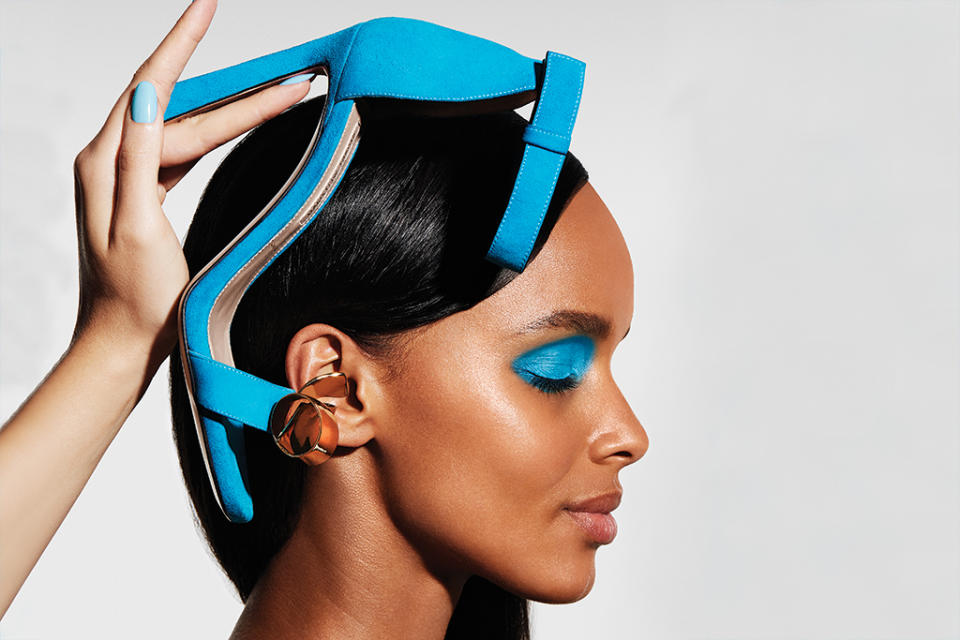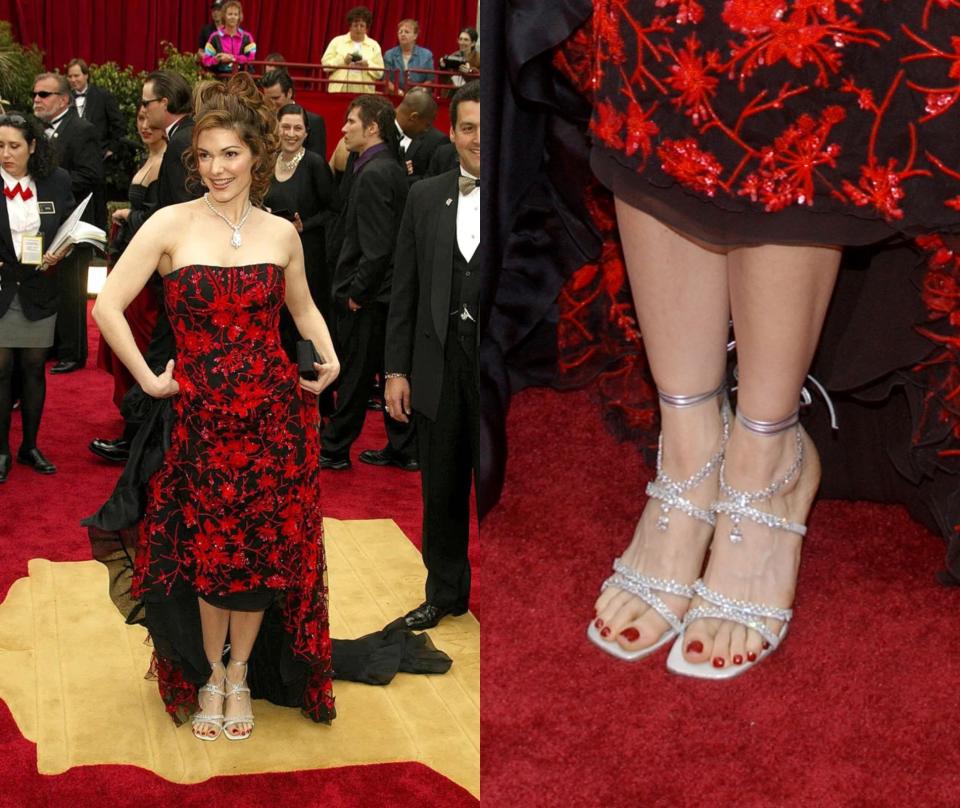A History of Stuart Weitzman: The Man, the Brand, the Million-Dollar Shoes

When celebrities and royals step out on the street or the red carpet, there’s a good chance they’re wearing Stuart Weitzman shoes, whether it’s the glamour Nudist sandal or the chic and comfortable 5050 boots.
Known for understated luxury, the brand was founded by Stuart Weitzman, a rare genius with a gift for design, marketing and business. While most designers leave the financial responsibilities to a CEO or CFO, Weitzman was involved in everything, including orchestrating some of the brand’s buzziest moments and multimillion-dollar mergers.
More from Footwear News
Here, FN looks back at the company’s founding, how it’s changed and evolved, and which styles were made to last.
How Stuart Weitzman Started
Born in 1941 on Long Island, N.Y., Stuart Weitzman spent his youth apprenticing in the Havermill, Mass., shoe factory owned by his father, Seymour Weitzman. After graduating from The Wharton School of business in 1963, he officially joined the company. But soon after, his father died, so Weitzman and his brother, Warren, decided that Stuart’s “sketching hobby” could be put to use in the family business.
Weitzman’s first shoe was a high-heeled pointed-toe pump called the Puff T, which was picked up by famed New York retailer I. Miller. Over the decades, his designs would land in all the top stores around the world, on the pages of fashion magazines and on many famous faces.
Weitzman told FN that it was TV anchor Barbara Walters who inspired the brand’s celebrity focus, when in the 1970s she asked him to make his white lace bridal shoes in other colors. “Boy, she started the whole game,” Weitzman recalled.
In 1986, Weitzman officially launched his namesake brand. Since then, the label has produced the majority of its collections in Elda, Spain, a city in the Alicante region known for artisanal shoemaking.

Weitzman’s Deal-Making Era
Fashion is an expensive business, and along the way Stuart Weitzman has had several minority and majority partners.
In 2005, private equity firm Irving Place Capital bought a 40 percent share in the brand — a stake they later gave up when Jones Apparel Group Inc. agreed in 2010 to buy a 55 percent stake in Stuart Weitzman Holdings LLC. Per terms of the deal, Jones made initial cash payments of about $180 million to selling shareholders, including Irving Place.
Two years later, Jones Group went all in, taking a full stake in the footwear brand. Weitzman continued to run the business as executive chairman alongside president Wayne Kulkin, but ultimately the partnership turned out to be a dud. In 2014, Jones Group was acquired by Sycamore Partners, which began carving up the portfolio for sale, so Weitzman started shopping for a new home. He told FN his first and only choice was Coach Inc.
Weitzman orchestrated the sale of his company to Coach for $574 million in 2015, and in May 2017 he exited the business to tackle his many other pursuits, including playing competitive pingpong, funding a museum in Spain and co-producing Broadway plays. (In October 2017, Coach Inc. changed its name to Tapestry.)

Weitzman’s Design Successors
Loewe designer Giovanni Morelli joined Stuart Weitzman in May 2017 as the first creative director of the brand following its founder’s departure. Morelli resigned unexpectedly a year later amid accusations of sexual harassment. He was replaced in July 2018 by shoe industry veteran Edmundo Castillo as head of design.
Castillo previously operated a namesake brand, which was stocked at luxury stores including Bergdorf Goodman. He also had held lead design roles for Aquatalia, Casta?er, Via Spiga, Santoni, Sergio Rossi and Tod’s.
Under his tenure, Stuart Weitzman embarked on a collaboration with buzzy designer Colm Dillane of KidSuper for spring 2023 and launched its first men’s collection for spring 2024. Castillo exited the brand in 2023.

Celebrity Fans & Most Popular Styles
Stuart Weitzman’s first big celebrity moment came in 1983, when Aretha Franklin thanked him for designing her “Stuart Weitzman for Mr. Seymour” shoes while accepting the award for Favorite Soul Album at the American Music Awards.
Then in 2002, Stuart Weitzman’s Million-Dollar sandal was a major tipping point for the company. Laura Harring, an unknown actress in “Mulholland Drive,” wore it to that year’s Academy Awards. Her photo appeared in hundreds of newspapers, including the cover of USA Today — and it made Stuart Weitzman a household name.

Over the years, the brand’s designs have been beloved by Hollywood stars and international royalty for their comfort and high-quality luxury. Some of its most popular shoe styles are the 5050 back-stretch boot, introduced in 1993; the famed Nudist sandal, which debuted on the feet of Diane Kruger in 2013; the over-the-knee Lowland and Highland boots, launched in 2014.
The company has helped fuel its covetable status through brand campaigns featuring top models such as Natalia Vodianova, Kate Moss, Gisele Bündchen, Gigi Hadid, Kendall Jenner and more.

Best of Footwear News
Sign up for FN's Newsletter. For the latest news, follow us on Facebook, Twitter, and Instagram.
Solve the daily Crossword

